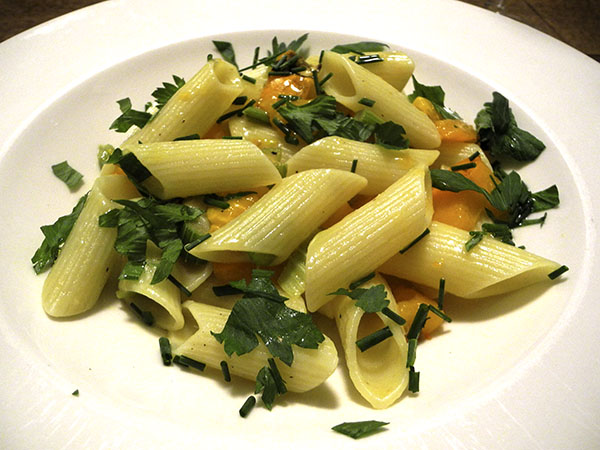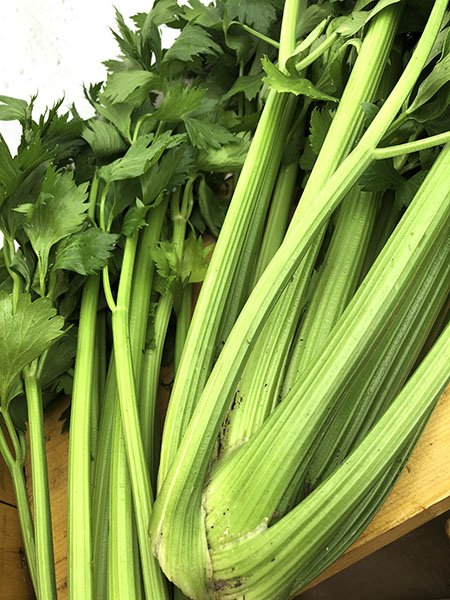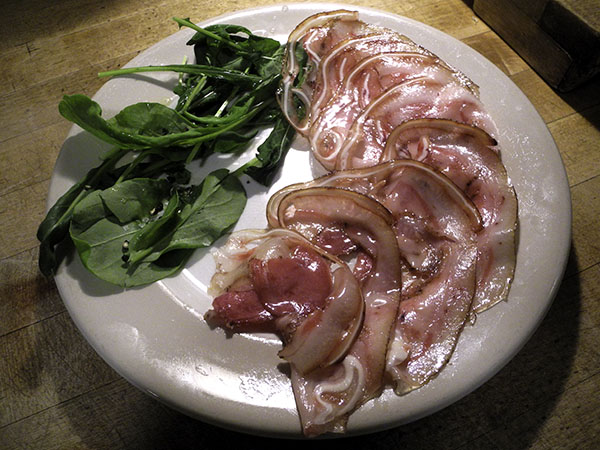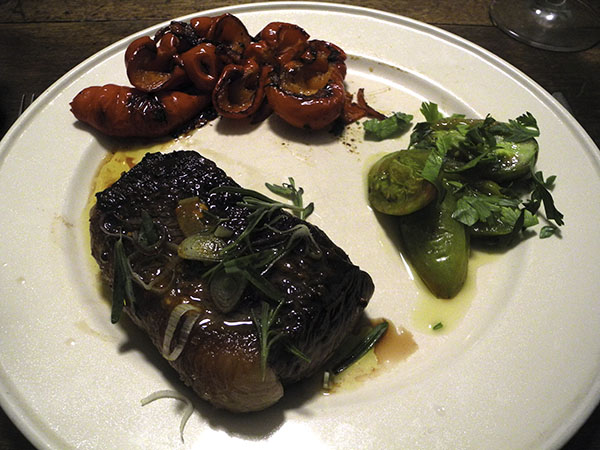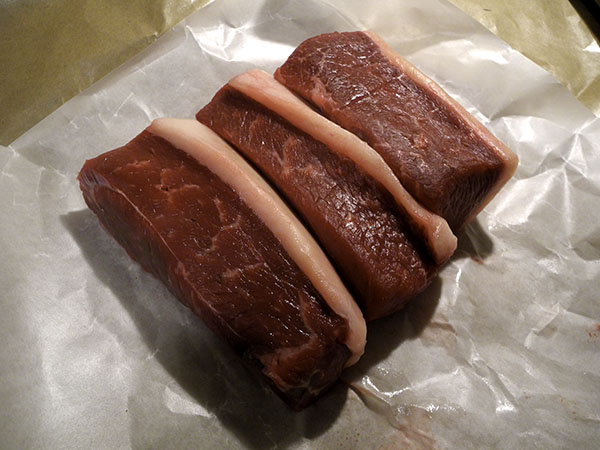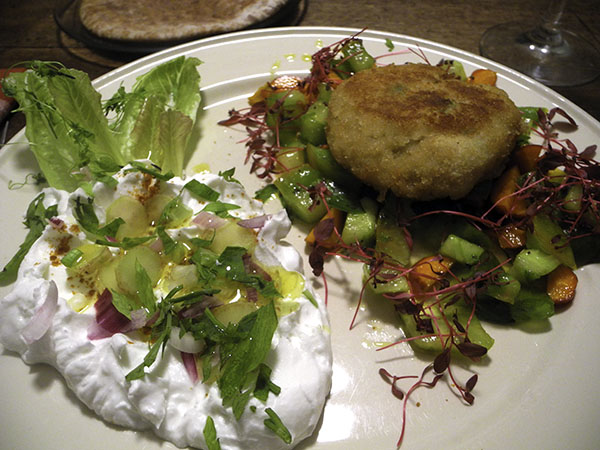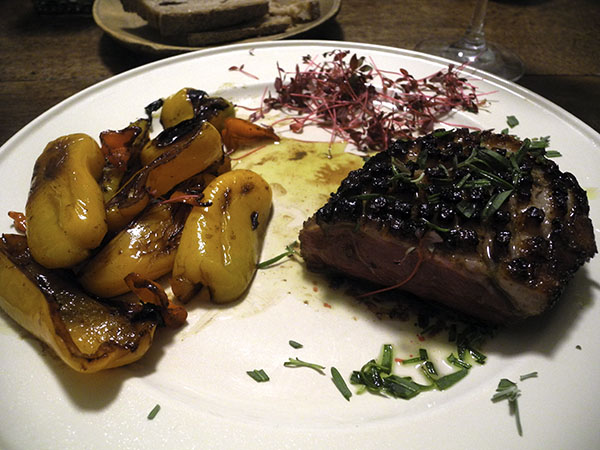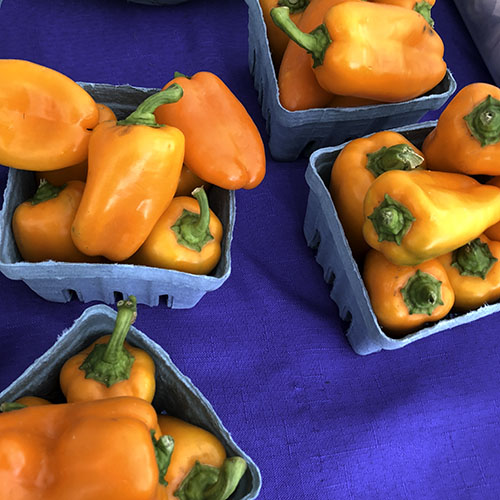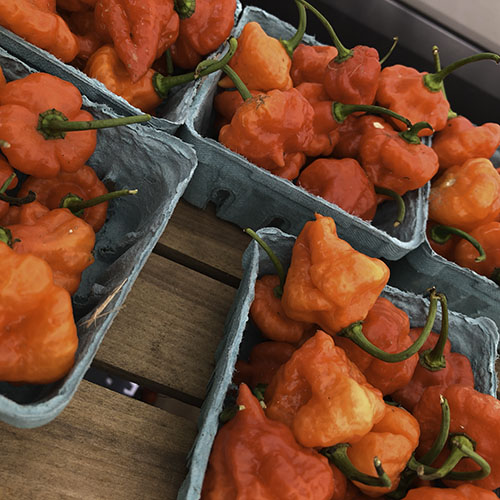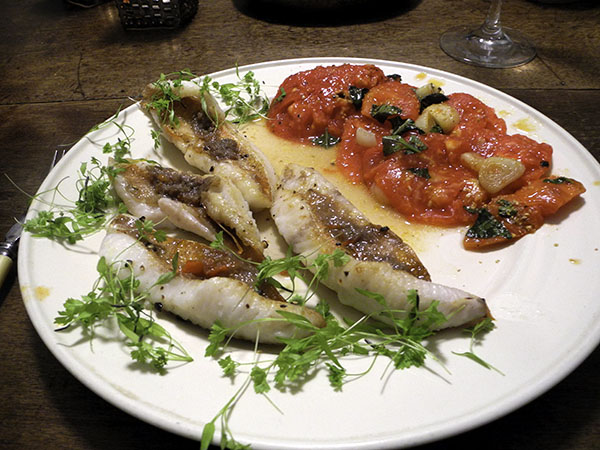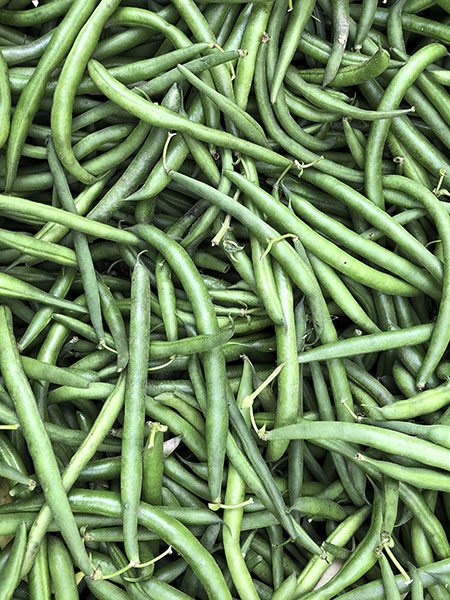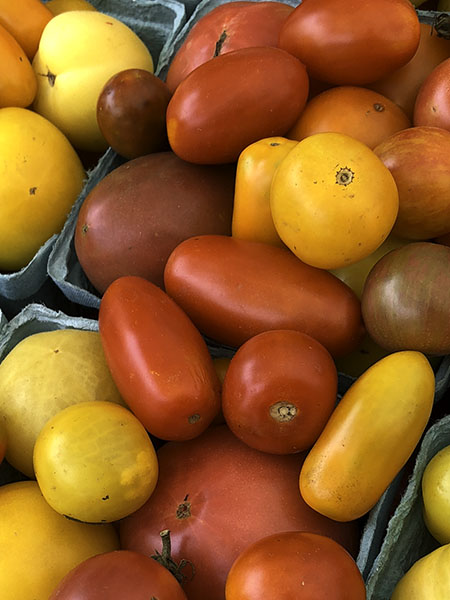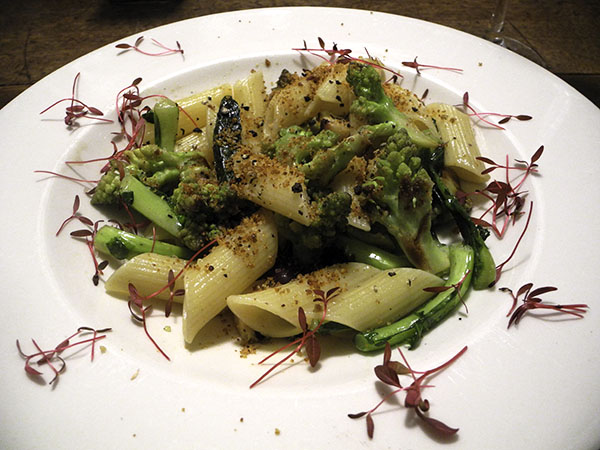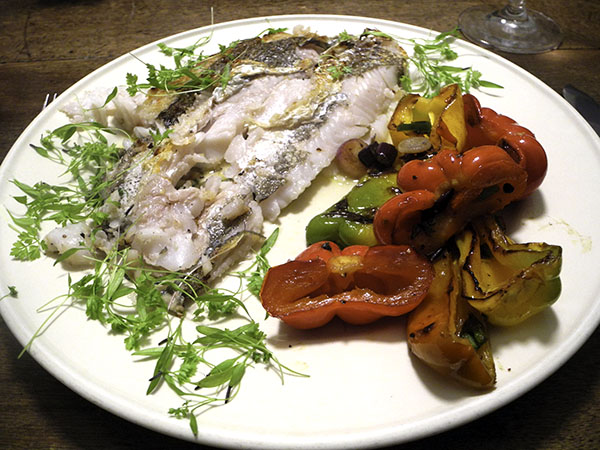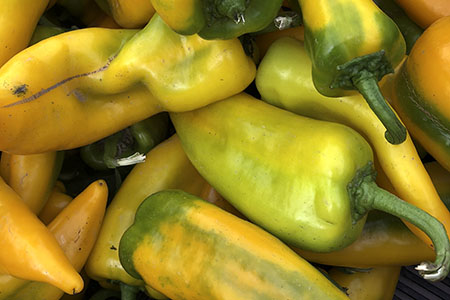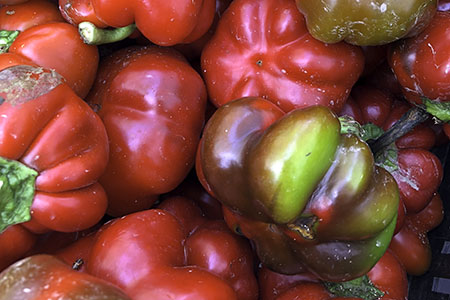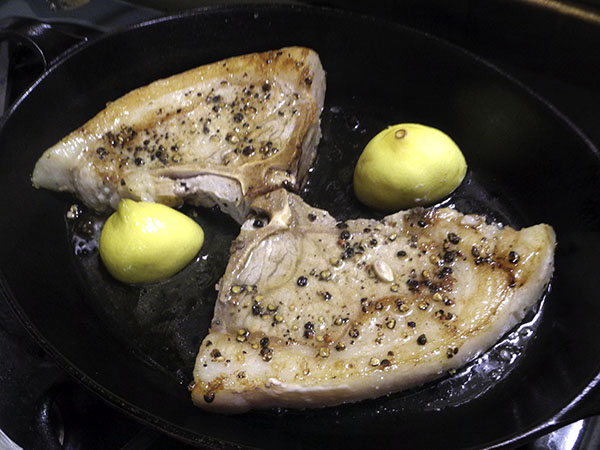
it’s a bucket of hammerhead shark steaks (I’d already picked out mine)
I’ve never seen a hammerhead shark steak in the Greenmarket.
In Friday I saw a hammerhead shark steak in the Greenmarket.
That night I cooked the hammerhead shark steak I saw in the Greenmarket.
It was a special occasion, since we were entertaining a friend visiting from Berlin, and I’m pretty sure there are no hammerhead shark steaks in Berlin. I was really intrigued, they looked beautiful, and I couldn’t resist buying some. It didn’t occur to me that I was taking a chance, especially sharing it with company, since I had never cooked hammerhead before, and neither of us had ever even tasted it.
Once home, I couldn’t find anything on line that seemed useful as a cooking suggestion, but something told me I could do worse than just treating it like swordfish, since I had done exactly that 2 years ago with a very different member of the shark family.
Fortunately I hadn’t really looked deeply into what was there on the internet until the next day, when I went back on line to learn more about what we had eaten the night before. It seemed that almost no one had anything good to say about the taste of hammerhead shark, and in fact much of the conversation was pretty frightening, especially when it got into the uric acid thing. One of the more positive comments read, “They are edible if you are starving.”
Well, we weren’t starving, and they were far more than merely edible. Maybe ours was a young one, and maybe the fisherman knew what he was doing. I would say that if there were any shortcomings, it was in its texture, or its dryness, both of which may have been my doing, although hammerhead flesh is described everywhere as meaty and firm. Still, I may have used too high a flame, and/or kept it on the heat a bit too long.
I’m willing to prepare it again, if I ever come across another, but most sharks of any kind appear in markets as a byproduct in a search for other fish, so it may be a while before I get a chance.
The vegetables were stars throughout the meal, and almost as exotic as the hammerhead.
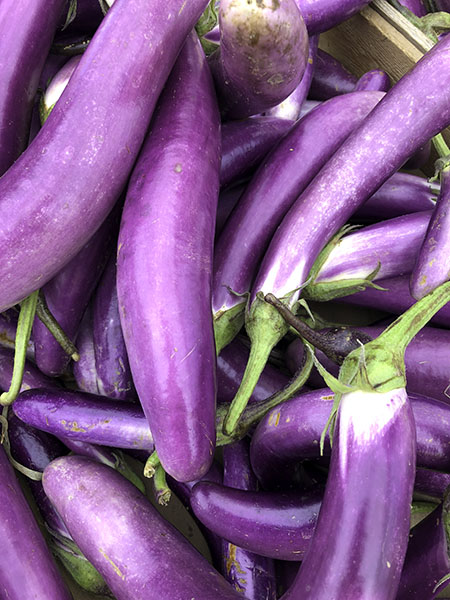
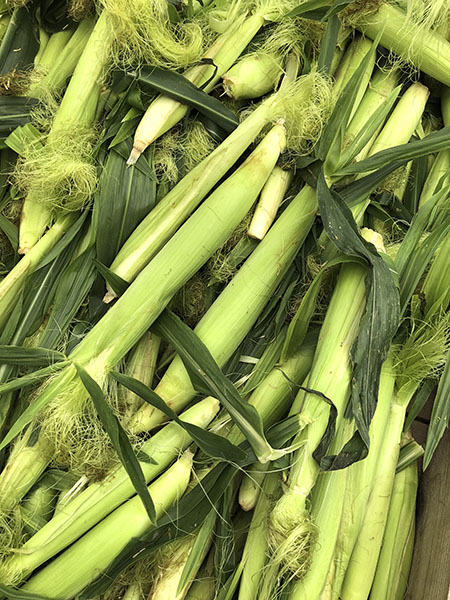
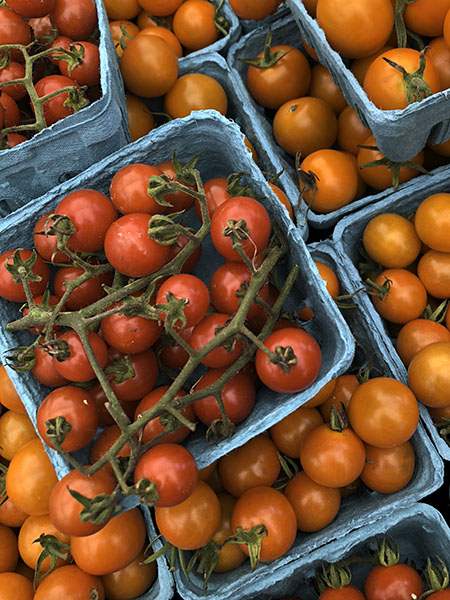
Before we got started that night there was an aperitif.
- some rustic Italian breadsticks, Mario Fongo grissini integrali, from Buon Italia
- the wine was a California (Central Coast) sparkling white, Eponina Brut California NV, from Naked Wines
And also an appetizer.

- ten or 12 Japanese eggplant (or possibly ‘orient charm’ Chinese eggplant?) from Alewife Farm, each halved horizontally, brushed on all sides with a mixture of a little olive oil, 2 or more finely-chopped rocambole garlic cloves from Keith’s Farm, sea salt, and freshly-ground black pepper, pan-grilled on a seasoned, large double burner-size cast iron ribbed pan over a brisk flame, turning once or twice, sprinkled with chopped spearmint from Keith’s Farm, drizzled with a bit of olive oil, arranged on a serving platter with some pitted kalamata olives from Whole Foods Market, and garnished with more torn mint
- slices of an organic multigrain baguette from Bread Alone
- the wine was a Spanish (Catalonia/Terra Alta) white, áureo by Joseph Puig (100% Macabeo/Viura/Macabeu), the gift of our guest
The shark was just about the easiest part of the meal to prepare, once I had decided to treat it more or less like swordfish steak, using the same recipe I had sought out when I had cooked mako shark 2 years ago.
For the curious, or the ambitious, this is a pretty good video demonstrating how to fillet, maybe a 5-foot long hammerhead shark (it’s probably best to have a garage if you’re going to try it yourself).

- three 7-ounce thick (1 3/4″) hammerhead shark steaks from Pura Vida Seafood, rubbed with a mixture of fresh herbs (parsley, lovage, spearmint, and sage from Keith’s Farm; dill buds from Willow Wisp Farm; tender rosemary from Lani’s Farm; summer savory, from Stokes Farm), all chopped together with sea salt, some freshly-crushed black pepper and a large rocambole garlic clove from Keith’s Farm, some zest from an organic Whole Foods Market lemon, with a bit of olive oil to moisten the mix, most of it spread onto the surface of the fish before it was pan-grilled, basted throughout the cooking process with some of the reserved mixture, removed, ideally, while barely fully cooked in the center [I had gone a little further in this case; I blame it on my huge social distractions], arranged on the plates, finished with a squeeze of the lemon used for the zest and a drizzle of olive oil, garnished with bronze micro fennel from Two Guys from Woodbridge, served with lemon quarters
- twelve ears of shucked baby bicolor corn from Alewife Farm, sautéed inside a large heavy vintage oval copper skillet in which a little butter and a little less olive oil had been heated until quite hot, sprinkled with Maldon salt, black pepper, and a little chopped aji dulce pepper from Eckerton Hill Farm, finished with fresh chives from S. & S.O. Farm
- some tiny ‘wild’ tomatoes (‘Matt’s Wild Cherry’?) from Windfall Farms, warmed in a little olive oil inside a small vintage Pyrex skillet, seasoned with salt and pepper, sprinkled with dill blossoms from Willow Wisp Farms, arranged on the plates on top of some local Bowery Farm arugula from Foragers Market dressed with olive oil , lemon, salt, and pepper
- the wine was a wonderful Spanish (Galicia) white, Valdesil, Godello Sobre Lias, 2015, from Flatiron Wines
There was a dessert, basically the classic American ‘cake and ice cream’.
- an scoop of delicious Old Mother Hubbert Dairy lemon basil gelato (ingredients: non fat dry milk, lemon juice, orange juice, fresh basil, lemon zest), produced at the Back to the Future Farm, near Middletown, NY, that I had picked up at Rose Hubbert‘s stand at the Union Square Greenmarket, resting on top of a slice of sour cream cheesecake from Bread Alone, also purchased in the Greenmarket
